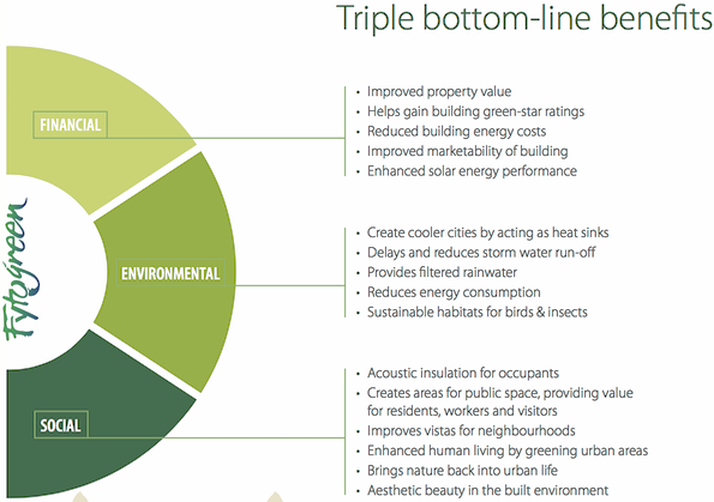Green is the New Black
30 years ago your strata roof might have been covered in tonnes of black rocks, or it was a barren landscape with only a vent here and there. While new strata developments often already have solar panels or lush community gardens, older buildings still have roofs that are greatly underutilised.
Converting this space into a green roof will increase property marketability and valuations, and has demonstrated financial, social and environmental benefits for the building, and others around it. It is likely that you’ve seen green roofs and walls popping up more and more around your city. The City of Sydney is a pioneer in the area, with the council recognising the benefits, and adopting the green roofs and walls policy in 2014. The Victorian State Government is also on board, and in 2016 the Premier’s Sustainability Award for Built Environment went to 38 Westbury, an apartment in St. Kilda, for their retrofit of a green roof. This 1950s three-storey strata is a perfect example of a body corporate that has successfully installed a green roof, and now benefit from a community space and vegetable garden.
With the NABERS environmental performance rating for residential apartments just around the corner, a green roof upgrade is a financially sound investment for a strata roof. According to the City of Melbourne’s Growing Green Guide, properties with green roofs can achieve increases in property values of up to 11%, and even surrounding buildings with views onto green roofs can gain a 4.5% increase. With solar panels as well property valuations and marketability can soar, and the green roof can improve system efficiency by keeping panels cool and absorbing dust particles in the air.
So are they worth it? Beyond the superficial appeal, green roofs have demonstrated benefits across the board, and play an important role in reducing the urban heat island effect and keeping our cities liveable. They may also be a stepping-stone into the future of vertical farming, where your local farmers’ market may just be on your roof.
There are things to be aware of when considering a green roof. There are structural risks from the weight of soil, so it’s best to engage a structural engineer to assess the roof’s load-bearing capacity, especially if you want deeper soil for larger plants or vegetables. To mitigate risk, a substrate as shallow as 120mm can be used, while still reaping the benefits. Raised gardens can be installed on structurally strong points to grow vegetables and herbs if a shallow substrate has to be used.
But the team at 38 Westbury in St. Kilda have shown that not only is it possible, but also well worth the effort. This little 1950s strata is living proof that green is not just for new developments.
For further reading see the City of Sydney sustainability page and their inspiration guide. Or read more about 38 Westbury’s journey on their website.
This article was contributed by Morgan Warnock, Editor. Winner of SCA Innovation of the Year, Wattblock specialises in low cost energy assessments and energy management strategies for strata buildings.



Leave a Reply